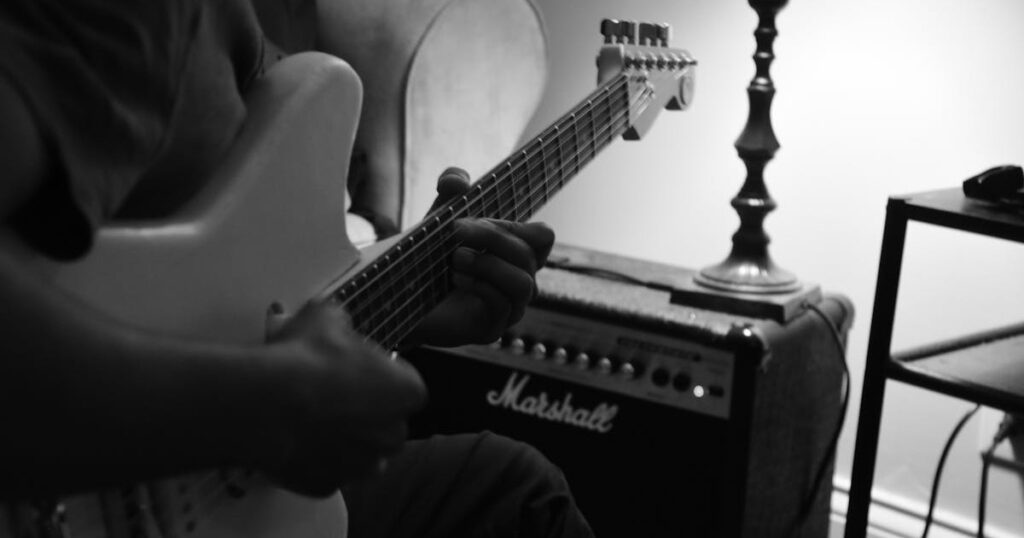Key Takeaway: Understanding Gibson acoustic guitar models involves recognizing how body shapes and sizes impact sound and playability. By grasping the basics of guitar anatomy and acoustics, players can make more informed choices about the instrument best suited to their needs.
As one of the most iconic and respected names in the world of guitars, Gibson has produced many legendary instruments over the years. From rock to blues to country, their acoustic guitar models have been played by musicians of all genres.
However, with so many different models available, it can be overwhelming for someone new to the world of acoustic guitars.

In this article, we will dive into the different types of Gibson acoustic guitar models and break down their body shapes, sizes, and sounds. We’ll also take a brief look at the anatomy of an acoustic guitar and how size and shape can impact its overall tone.
Whether you’re a local resident looking to support a community-oriented brand or a cultural enthusiast interested in the history and culture behind these iconic guitars, this article is for you.
Acoustic Guitar Body Types: Shapes, Sizes & Sounds Explained
Gibson offers three main body shapes for their acoustic guitar models: Jumbo, Round Shoulder, and Square Shoulder. Each shape has its unique characteristics that influence the sound of the instrument.
- Jumbo: As the name suggests, jumbo guitars have a larger body size compared to other acoustic guitars. They offer a deep bass tone with plenty of projection and volume. These guitars are commonly used for playing blues and country music.
- Round Shoulder: Round shoulder models have a body shape similar to that of jumbo guitars but with a slightly smaller body size. This shape produces a balanced tone with warm bass and clear treble notes. It’s a versatile guitar that can be used for various genres.
- Square Shoulder: Square shoulder models have a more square-shaped body compared to the other two shapes. They offer a bright and punchy sound with excellent projection. These guitars are commonly used in rock and pop music.
Gibson also offers acoustic guitar models in three main sizes: Small body, mid-sized body, and super jumbo. The size of the instrument can also greatly impact its overall sound.
- Small Body: As the name suggests, small-body guitars have a compact size, making them easy to hold and play. They offer a balanced tone with slightly less bass compared to the larger sizes.
- Mid-Sized Body: Mid-sized body guitars are slightly bigger than small-body guitars but still smaller than super jumbo models. They offer a well-balanced sound with a good mix of bass and treble notes.
- Super Jumbo: Super jumbo models have the largest body size among Gibson’s acoustic guitar line-up. These guitars produce a deep and resonant sound with plenty of volume and projection.
A Brief Acoustic Guitar Anatomy Lesson
Before we dive deeper into the different Gibson acoustic guitar models, it’s essential to understand the basic anatomy of an acoustic guitar. While there are variations in design and materials used, the following are the key components of an acoustic guitar:
- Body: The main part of an acoustic guitar is responsible for producing sound.
- Soundhole: An opening on the body that allows the sound to escape.
- Top (or Soundboard): The top part of the body that vibrates and amplifies the sound produced by the strings.
- Back and sides: These make up the sides and back of the body, providing support and resonance to enhance the sound produced by the top.
- Neck: The long piece attached to one end of the body that holds the fretboard, tuners, and strings.
- Fretboard: The flat surface with frets that run perpendicular to the neck, allowing the player to press down on the strings at specific points to produce different notes.
- Bridge: The piece that holds the strings in place on the body and transmits their vibrations to the top of the guitar.
The Impact of a Guitar’s Size and Shape
Now that we have a basic understanding of an acoustic guitar’s anatomy let’s explore how size and shape can impact its overall sound. Generally, larger guitars produce more volume and bass compared to smaller ones. However, this doesn’t mean that one is better than the other; it all comes down to personal preference.
A jumbo guitar, for example, is perfect for someone looking for a powerful and commanding sound. It’s also great for solo performances where you need to fill up a room with your sound. On the other hand, smaller body guitars are easier to handle and offer a more comfortable playing experience.

The shape of an acoustic guitar can also influence its sound in subtle ways. For instance, round shoulder models have a slightly different tone compared to jumbo models due to their smaller size. Square shoulder models produce bright and punchy sounds that work well in rock and pop music.
Frequently Asked Questions
What is the difference between Gibson’s Jumbo and Super Jumbo acoustic guitar models?
The main difference between these two models is their size. Jumbo guitars have a larger body compared to super jumbo models, resulting in differences in sound and playability.
Can I use a small body acoustic guitar to perform on stage?
Absolutely! Many artists prefer smaller body guitars for live performances as they are easier to handle and provide a balanced tone that works well with other instruments.
Conclusion: Gibson Acoustic Guitar Models Explained
Gibson acoustic guitars, with their diverse range of body shapes and sizes, offer unique sounds and playing experiences that cater to musicians of all levels and stylistic preferences.
Understanding the intricacies of each model—from jumbo to super jumbo and round shoulder to square shoulder—empowers players to make informed choices that align with their musical goals.
Whether you’re a beginner seeking an approachable and well-balanced guitar or an experienced performer in search of powerful projection for live shows, Gibson guitars stand as a testament to craftsmanship and versatility. Explore the world of Gibson Acoustics to discover the perfect instrument that resonates with your musical journey.
